This post may contain affiliate links. Please see our disclosure policy.
Canning your own pasta sauce with meat is a wonderful way to preserve the flavor of fresh tomatoes and enjoy a hearty meal at any time of the year.
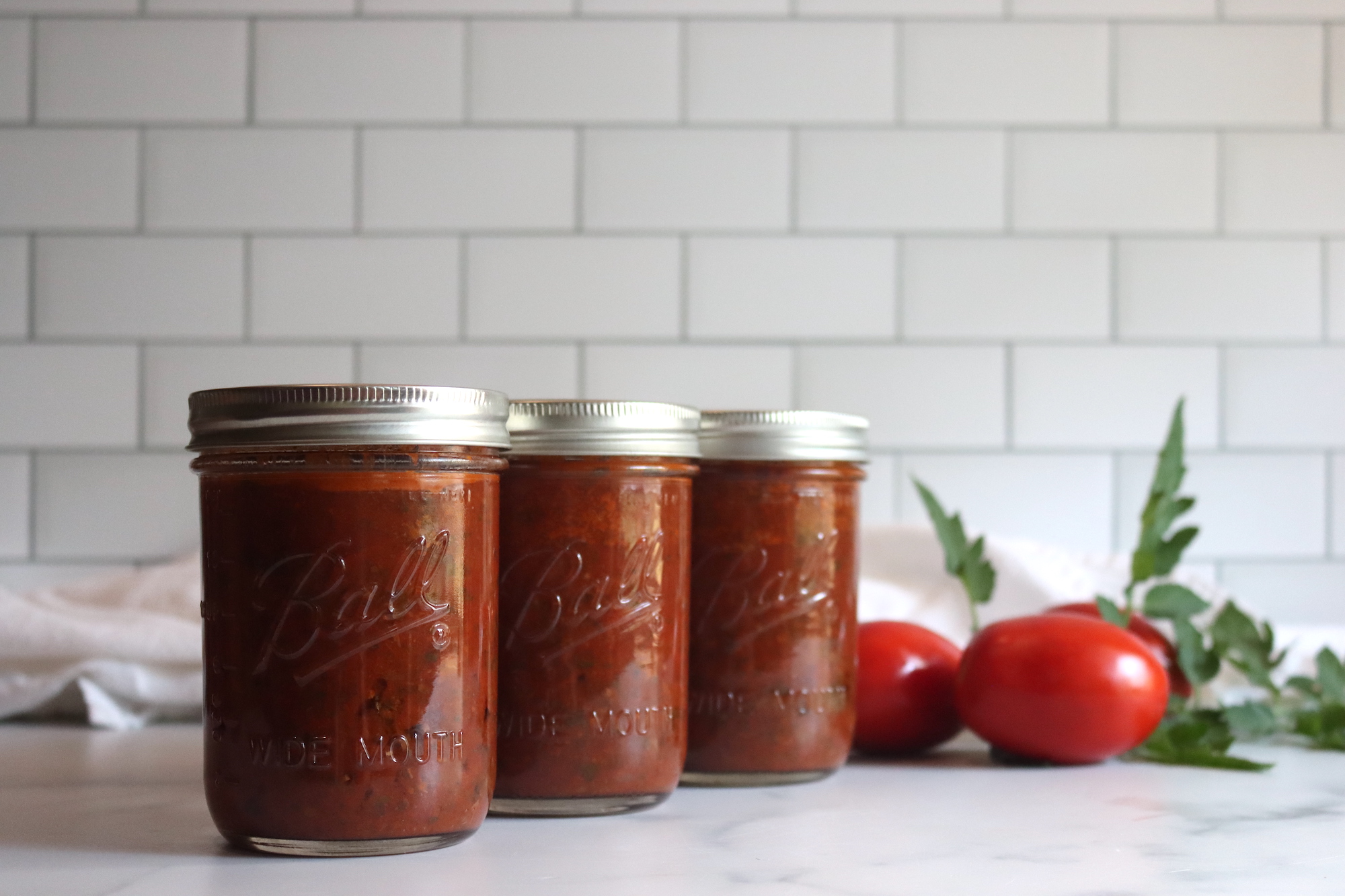
Homemade pasta sauce is one of the best ways to put up fresh tomatoes in season, and this recipe does double duty as a meal starter with the meat already included in the sauce. You get a bit more protein in your meal, and you’re ready to serve up a heat and eat meal in a hurry.
Just boil a bit of water for pasta on the side, and top with a jar of fresh meat sauce right from your own pantry shelf.
This particular recipe is a tested pressure canning recipe developed by the National Center for Home Food Preservation. They also have a tested recipe for basic pasta sauce without meat, and both are pressure-canning recipes since they include plenty of low-acid ingredients.
If you’re specifically looking for a water bath canning recipe, take a look at my full list of tested pasta sauce canning recipes. Of course, those won’t contain meat, as meat sauce must be pressure canned.
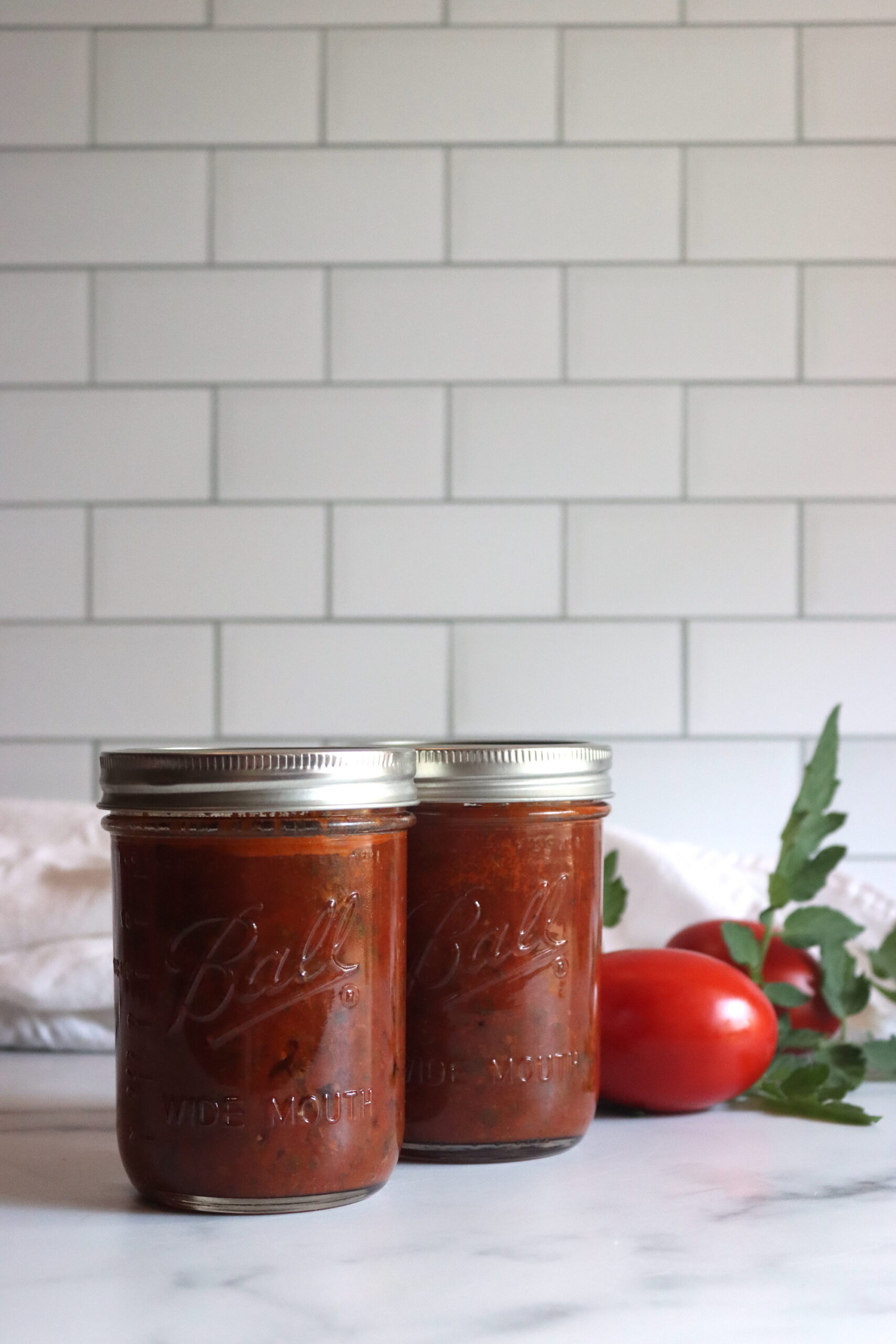
Ingredients for Canning Spaghetti Sauce with Meat
This is a tested recipe for canning pasta sauce with meat from the National Center for Home Food Preservation. To make a 9 pint canner batch, you’ll need the following:
- 30 lbs tomatoes
- 2-1/2 lbs ground meat (beef, sausage, venison, or turkey)
- 5 cloves garlic, minced
- 1 cup chopped onions
- 1 cup chopped celery or green peppers
- 1 lb fresh mushrooms, sliced
- 4-1/2 tsp salt
- 2 tbsp oregano
- 4 tbsp minced parsley
- 2 tsp black pepper
- 1/4 cup brown sugar
There are quite a few changes you can make to this recipe to suit your tastes. The only thing you can’t do is decrease the amount of tomatoes, or increase the amount of meat or other veggies.
If you don’t like a particular vegetable in here (other than tomatoes), then simply leave it out or decrease the amount.
The same goes for the seasonings, salt, and sugar.
Personally, I don’t like sugar in my pasta sauce, so I leave that out. I do, however, love adding balsamic vinegar because it adds depth of flavor in my opinion, and that’s perfectly fine for canning.
The recipe specifically states celery or green peppers, and you can use either or both, so long as the total amount doesn’t exceed 1 cup. (You can also substitute any type of pepper, hot or sweet.)
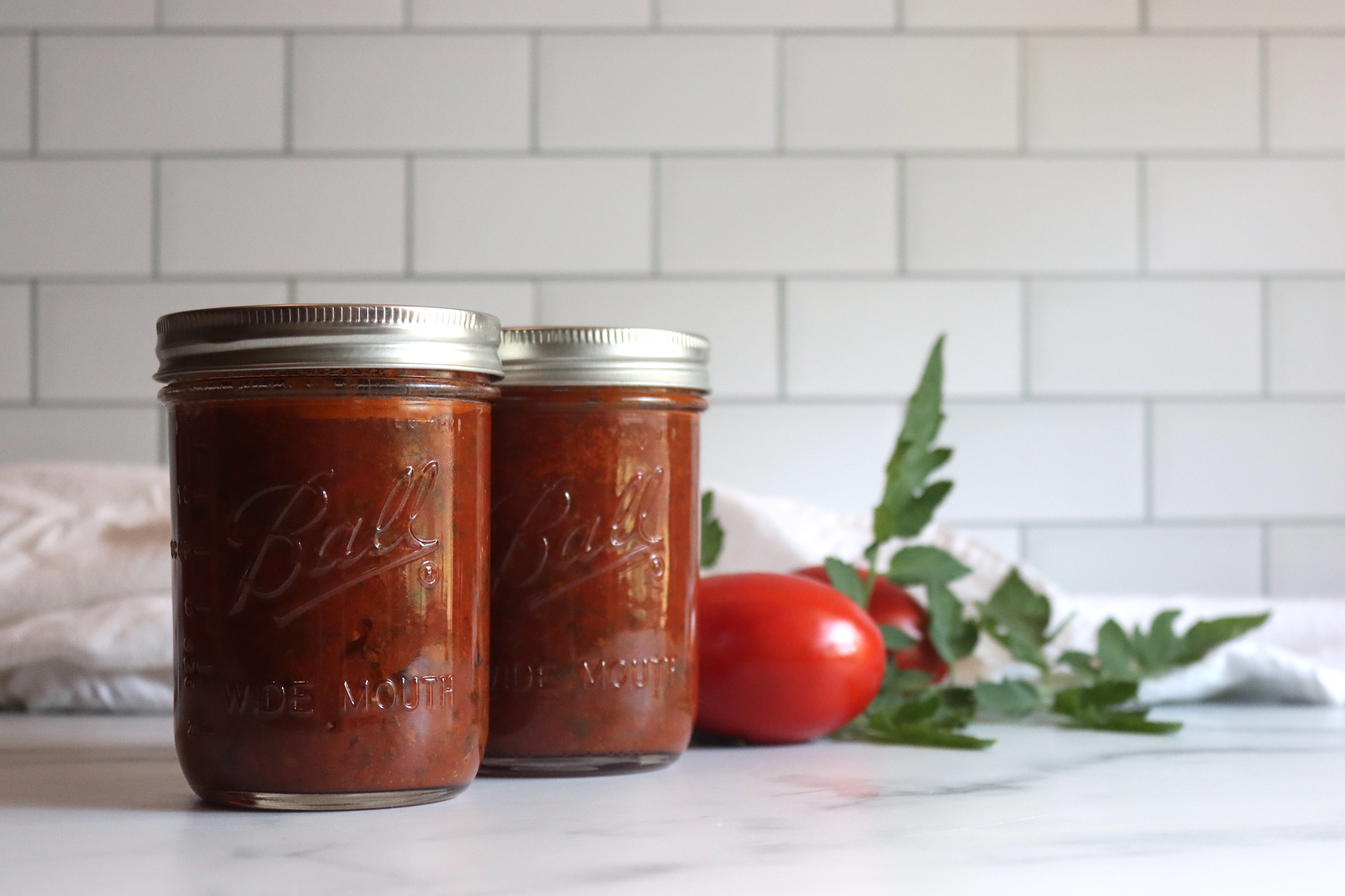
Making Pasta Sauce with Meat
Start by washing the tomatoes thoroughly. To easily remove the skins, dip the tomatoes in boiling water for 30 to 60 seconds until the skins split, then transfer them to a bowl of cold water.
Once cool, slip off the skins, remove the cores, and quarter the tomatoes. In a large saucepan, boil the quartered tomatoes uncovered for about 20 minutes, then pass them through a food mill or sieve to create a smooth pulp.
Meanwhile, brown your choice of ground meat in a separate skillet. After the meat is cooked, add the minced garlic, chopped onions, celery or green peppers, and mushrooms. Sauté the mixture until the vegetables are tender and fragrant.
Combine the sautéed meat and vegetables with the tomato pulp in the large saucepan, adding the salt, oregano, parsley, black pepper, and brown sugar.
Bring the mixture to a boil, then reduce the heat and let it simmer uncovered, stirring frequently until the sauce thickens and reduces in volume by nearly half.
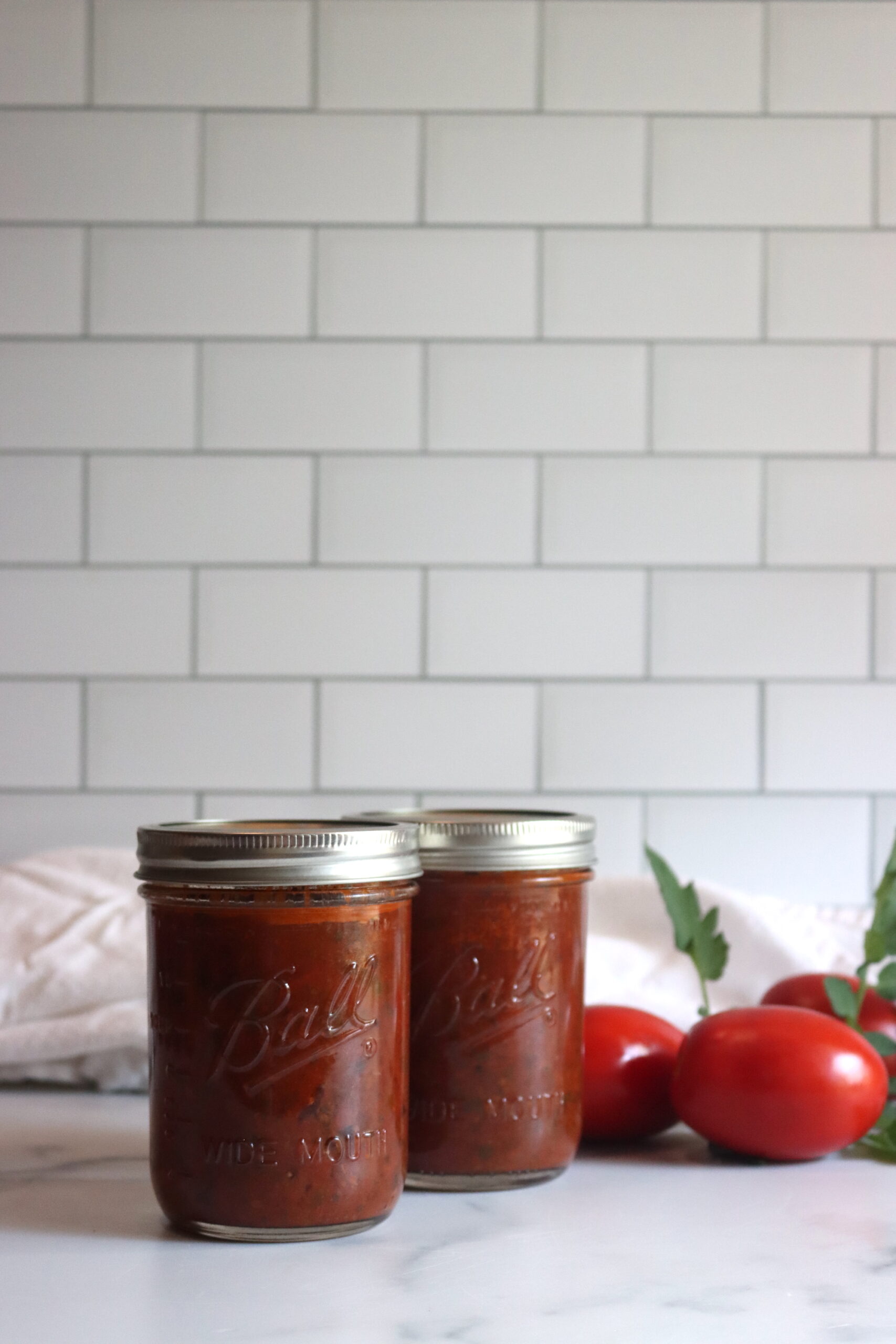
Canning Meat Sauce
Once your sauce has reached the desired thickness, prepare a pressure canner, jars, lids, and rings.
The pressure canner should have a few inches of simmering water at the bottom, as this is a hot pack recipe.
Once the canner is hot, it’s time to fill the jars. Be sure to leave a 1-inch headspace at the top of each jar. Wipe the rims of the jars with a clean cloth to ensure a proper seal, then adjust the lids.
Load the jars into the canner, seal the lid, and allow the steam to vent for 10 minutes.
Bring the canner up to pressure and process pint jars for 60 minutes and quart jars for 70 minutes. Pressure is adjusted to altitude, but the process times are always the same. See altitude adjustments for pressure below.
After processing, carefully remove the jars and let them cool on a clean kitchen towel or rack. Check that each lid has sealed properly by pressing down in the center—if it doesn’t pop back, the seal is good. Store the sealed jars in a cool, dark pantry.
Unsealed jars can be reprocessed or stored in the refrigerator for immediate use.
Refrigerate after opening.
Pressure Canning Altitude Adjustments
With pressure canning, the processing times stay the same at higher altitudes, but the pressures change. Here are the altitude adjustments for pressure canning:
For dial gauge pressure canners:
- 0 to 2,000 feet in elevation – 11 lbs pressure
- 2,001 to 4,000 feet in elevation – 12 lbs pressure
- 4,001 to 6,000 feet in elevation – 13 lbs pressure
- 6,001 to 8,000 feet in elevation – 14 lbs pressure
For weighted gauge pressure canners:
- 0 to 1,000 feet in elevation – 10 lbs pressure
- Above 1,000 feet – 15 lbs pressure
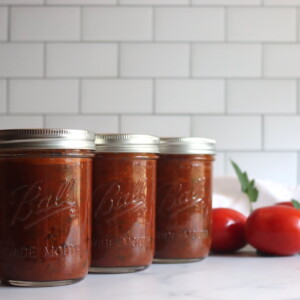
Canning Spaghetti Sauce with Meat (NCHFP Recipe)
Equipment
Ingredients
- 30 lbs tomatoes
- 2-1/2 lbs ground meat, beef, sausage, venison, or turkey
- 5 cloves garlic, minced
- 1 cup onions, chopped
- 1 cup celery or green peppers, chopped, 1 cup total, optional
- 1 lb fresh mushrooms, sliced (optional)
- 4-1/2 tsp salt
- 2 tbsp oregano
- 4 tbsp parsley, minced
- 2 tsp black pepper
- 1/4 cup brown sugar
Instructions
- Wash and prepare the tomatoes by dipping them in boiling water, then cooling in cold water to remove the skins.
- Quarter the tomatoes and boil them in a large saucepan for 20 minutes. Pass through a food mill or sieve to create a pulp.
- In a skillet, brown the ground meat. Add garlic, onions, celery or green peppers, and mushrooms, sautéing until tender.
- Combine the meat and vegetable mixture with the tomato pulp, adding salt, oregano, parsley, black pepper, and brown sugar. Bring to a boil, then simmer until thickened.
- Fill jars, leaving a 1-inch headspace, and wipe the rims and cap with 2 part canning lids.
- Load the jars into the canner, seal the lid, and allow the steam to vent for 10 minutes.
- Bring the canner up to pressure and process pint jars for 60 minutes and quart jars for 70 minutes. Pressure is adjusted to altitude, but the process times are always the same. See altitude adjustments for pressure below.
- Cool the jars on a towel, check the seals, and store in a cool, dark place.
Notes
Pressure Canning Altitude Adjustments
With pressure canning, the processing times stay the same at higher altitudes, but the pressures change. Here are the altitude adjustments for pressure canning:For dial gauge pressure canners:
- 0 to 2,000 feet in elevation – 11 lbs pressure
- 2,001 to 4,000 feet in elevation – 12 lbs pressure
- 4,001 to 6,000 feet in elevation – 13 lbs pressure
- 6,001 to 8,000 feet in elevation – 14 lbs pressure
For weighted gauge pressure canners:
- 0 to 1,000 feet in elevation – 10 lbs pressure
- Above 1,000 feet – 15 lbs pressure
Nutrition
Nutrition information is automatically calculated, so should only be used as an approximation.
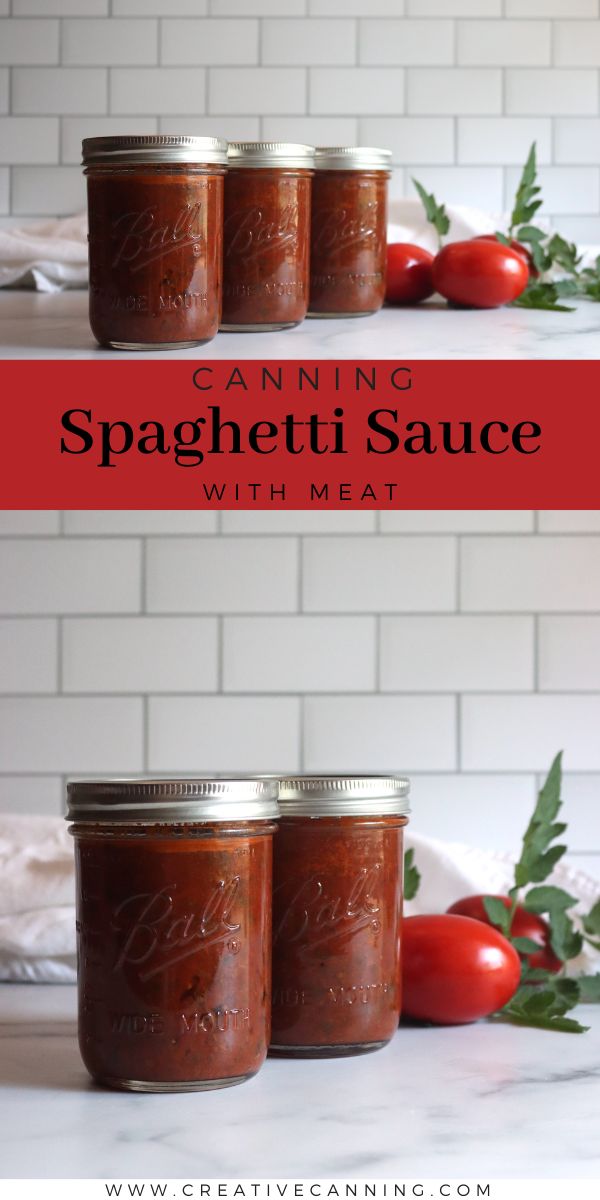
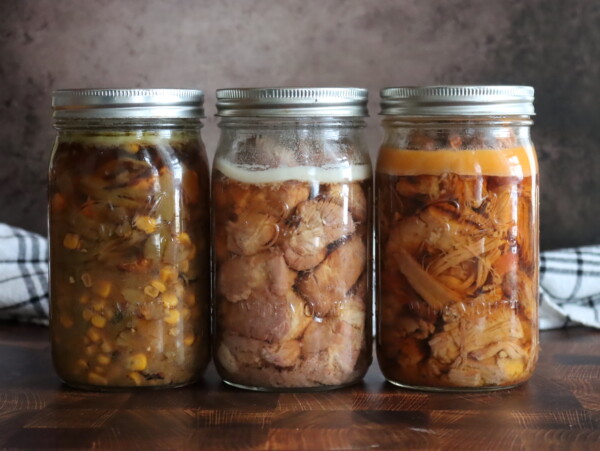
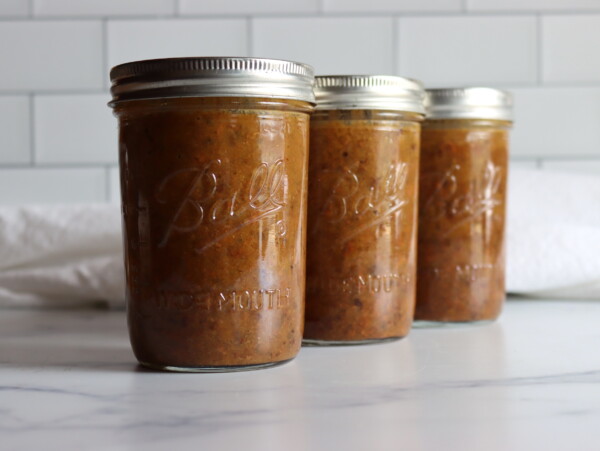
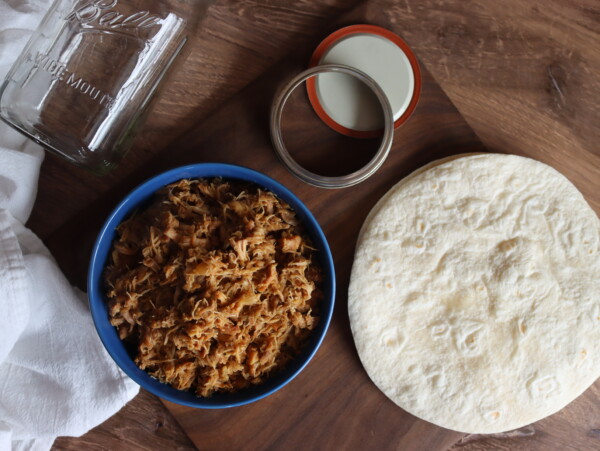

Hi Ashley. I’m preparing to make the Spaghetti Sauce with Meat recipe, which includes this statement: “To make a 9 pint canner batch, you’ll need the following: 30 lbs tomatoes.”
According to my calculations of ingredients, 1 lb. of tomatoes makes about 2 cups of liquid, so 30 lbs of tomatoes would contain 60 cups of liquid tomato, divided by 2 would make 30 pints. A 9 pint canner batch just doesn’t “compute”. Can you help me here?
I know it seems like an absurd amount of tomatoes, but you’ll be amazed at how much it all reduces when you actually peel and core them, and then cook them down into a sauce. The 30 pounds is as purchased, before you start processing them. This particular recipe has you cook the tomatoes for 25 minutes, then pass them through a food mill which removes seeds after they’ve cooked for a while, and then the sauce is put back and cooked down further. The idea is this sauce is very thick as the recipe was written by the NCHFP.
In their “canning plain unseasoned tomato sauce” instructions, they have these quantities for tomatoes:
“For thin sauce – An average of 35 pounds is needed per canner load of 7 quarts; an average of 21 pounds is needed per canner load of 9 pints. A bushel weighs 53 pounds and yields 10 to 12 quarts of sauce-an average of 5 pounds per quart.
For thick sauce – An average of 46 pounds is needed per canner load of 7 quarts; an average of 28 pounds is needed per canner load of 9 pints. A bushel weighs 53 pounds and yields 7 to 9 quarts of sauce-an average of 6½ pounds per quart.”
A “thin sauce” is very thin and watery, and a “thick sauce” is kind of like marinara. This is cooked a bit thicker than that, and then the other veggies and meat are added back in and it gets you back up to the 9 pint mark.
If you make it a bit thinner, that’s fine too, as you can always make pressure canning recipes less dense without impacting safety. For a thinner sauce, you’d end up with up to 12 pints (roughly) from this recipe.
But yes, the short answer is, I know 30 pounds of tomatoes sounds like way too much, but that’s the “standard” quantity that the NCHFP starts with in most of their sauce and tomato canning recipes.
Hi Ashley. I find your canning blog very helpful! I do have a question about pressure canning pasta sauce. I was surprised to read that you can’t increase the amount of low acid vegetables. I understand why that is true for water bath canning but since low acid foods can be safely pressure canned on their own, I’m wondering why you couldn’t just pressure can based on whatever ingredient calls for the longest processing time? For example, I’m planning an “end of season” pasta meat sauce to clear out the last of my garden, so I would include some green beans, carrots and maybe some Swiss chard. It’s the Swiss chard that takes the longest processing time (70 minutes for pints – go figure!) so I may even not include that, so it looks like the ground beef has the longest processing time. But obviously I don’t want to make my family sick, so I’m wondering if you are aware of the reasons behind the “no extra low acid foods” argument when pressure canning.
That is a great question! So the main reason on this recipe is the times tested are for the ingredients in here, and it’s a shorter time than you’d use if you added a bunch of other stuff (like beef, as you say). The idea is that you can’t change the recipe and still use these canning times. You can, however, change the recipe according to established guidance so long as you change the canning time as well.
Some extensions do go by the “longest canning time” rule, and other’s don’t. (You’d think they’d all agree here, but they don’t.)
The best guidance I have found though, is from the university of Alaska. They have guidance for canning both “hearty soups” and “brothy soups” which is basically the customizable canning recipe you’re looking for. With pasta sauce, you’d follow the “hearty soup” guidance as it’s a thick mixture of tomatoes and veggies (or meat).
The main thing here is the have guidance on what you can and cannot include, and they increase the canning time to 75 minutes for pints and 90 minutes for quarts. I have all the guidance and rules listed in my post on creating your own meal in a jar recipe here: https://creativecanning.com/choice-meal-in-a-jar-canning-recipe/
But, in short, yes, you can do what you’re planning regarding changing the recipe, but follow the guidance in the post I linked to. Best of luck with it!
I added Bayleaf to mine as well. I didn’t understand about the venting for 10 minutes on the pressure cooker. I have a Zavor Duo, and I only have high or low for the pressure cooker part so I just cooked everything for 60 minutes on high.
So this is a pressure canning recipe, to make the meat sauce shelf stable in jars for extended periods. The venting process is only something you do if you’re canning (ie, the food is in jars rather than just in the canner as is). You can also make it for immeditate consumption in a pressure cooker, as it sounds like you did, and it’s delicious too.
If you are pressure canning (rather than pressure cooking), the batch needs to be processed in a pressure canner, which is slightly different than a pressure cooker and has specific pounds pressure listed on a gauge so you can process things safely. When pressure cooking (not canning), simple “high” and “low” are enough since you’re not trying to make it shelf stable.
Sounds like it turned out nicely for you and I hope you enjoy it.
If you do want to learn about pressure canning, this article covers the basics: https://creativecanning.com/pressure-canning/